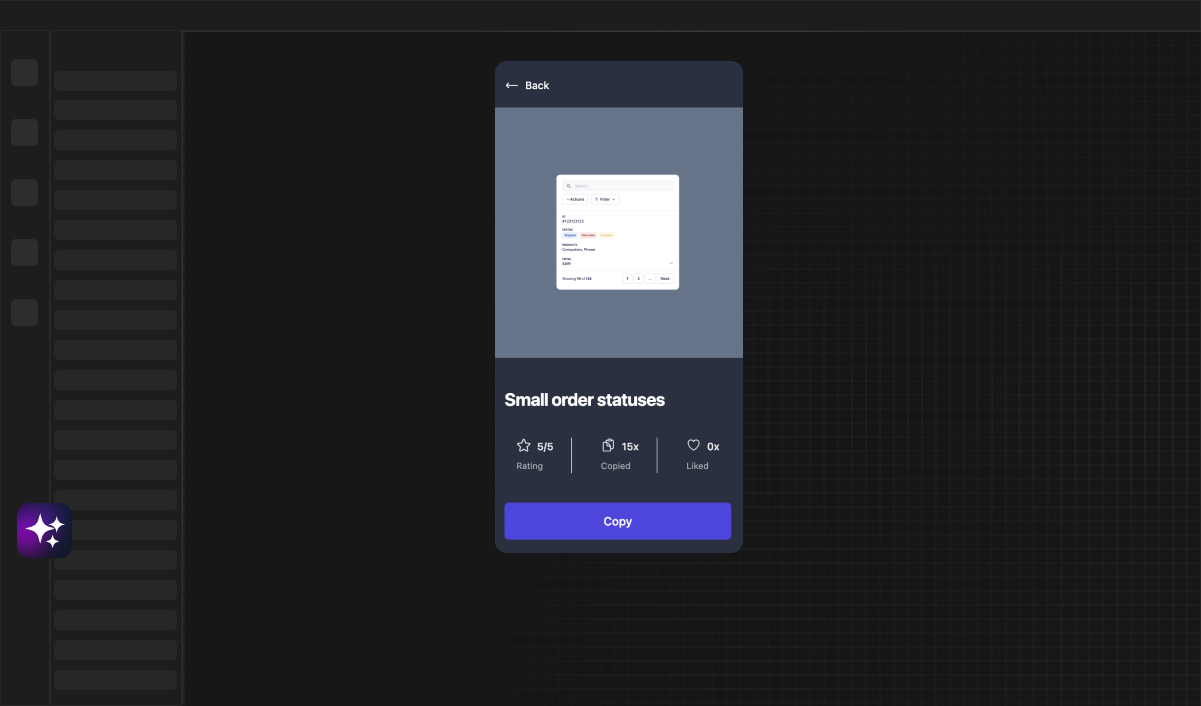
Web Developer
#1 Guide to API Connector in Bubble
Dive into the world of API connectors with our comprehensive guide tailored for Bubble.io. Learn to streamline and automate your app, with steps to set up, configure, and optimize API integrations. Perfect for developers at all levels!
Understanding API Connectors in Bubble.io
Have you ever wondered how modern applications share information and functionalities so seamlessly? It's like they're having a conversation in a language that machines understand – and that language is APIs or Application Programming Interfaces. In the world of Bubble.io, a revolutionary no-code development platform, API connectors are the unsung heroes that allow your application to communicate with the outside digital universe.
What Is an API Connector?
An API connector is your bridge between Bubble.io and external services. It enables your application to send and receive data to and from other platforms, whether it's fetching live weather data, ChatGPT, processing payments, or verifying user credentials. In essence, it's your Bubble app's passport to the vast capabilities of the web.
Benefits of Using API Connectors in Bubble
By using API connectors, you can extend the functionalities of your Bubble app far beyond its native capabilities. You can harness a multitude of services and data sources that would otherwise require extensive coding. API connectors empower you to build more complex, dynamic, and useful applications while maintaining the simplicity and user-friendliness of Bubble's no-code environment.
Setting Up API Connectors in Bubble
To get started with API connectors, there’s a journey you’ll undertake, from understanding the prerequisites to implementing your first successful API call. Thankfully, Bubble's intuitive design eases this process, helping you focus on creative solutions rather than becoming entangled in technical complexities.
Prerequisites for API Integration
Before you start connecting to any API, you’ll need to have certain information on hand. This typically includes the API key, which acts like a secret handshake between your app and the service you’re connecting to. You'll also want to know the endpoints, the specific locations where API calls are made, and any required headers or parameters needed for successful communication.
Step-by-Step Guide to Adding an API Connector
Adding an API Connector in Bubble involves a series of well-defined steps. You'll begin by installing the API Connector plugin and then proceed to configure your API calls within Bubble's interface. You'll need to provide the necessary authentication details and set up the types of calls (GET, POST, etc.) your application will make. Don't worry; we’ll delve deeper into each of these steps later on.
Configuring API Calls with API Connector
With the connector in place, the real magic begins when you start configuring your API calls. This is where your application learns what it should ask for, and how it should respond when it gets the answer.
Authentication Methods in API Connector
Different APIs require different methods of authentication. Some might need simple API keys, while others may use more complex OAuth protocols. The Bubble API Connector offers the flexibility to accommodate various authentication methods, ensuring that your app can securely connect to a wide range of services.
Structuring API Requests in Bubble
Structuring API requests in Bubble is an art in itself. You define the type of request, such as GET to retrieve data or POST to send data to a service. Then, you craft the exact parameters and body that the request needs. Bubble’s interface provides a clean and straightforward way to build these requests, so they match the API's expectations perfectly.
Advanced Techniques for API Connector
As you get comfortable with the basics, you can begin exploring more advanced techniques to really harness the power of APIs in your applications.
Using Dynamic Data with APIs
One of the most potent features of API connectors in Bubble is the ability to use dynamic data. This means you can build API calls that adjust according to user inputs or other real-time data within your app. The possibilities become nearly limitless when your API calls can react and adapt on the fly.
Handling API Response Data
When your app receives data from an API, you’ll need to decide what to do with it. Handling API response data effectively is crucial to presenting it to your users in meaningful ways. In Bubble, you can manipulate and display this data using workflows and elements, making sure that every piece of information serves a purpose.
Error Handling in API Connectors
Even in a world as perfect as Bubble, sometimes things go awry with API calls. Error handling is a vital part of building robust applications. By anticipating and managing potential errors gracefully, you can ensure that your app continues to provide a smooth user experience even when unexpected issues arise.
API Connector Best Practices
Like any tool, there's a right way to use API connectors. Following best practices can help you build more secure, efficient, and maintainable applications.
Security Considerations for API Connections
Security should always be top-of-mind when working with APIs. Sensitive data, such as API keys and user information, should be handled with care. In Bubble, you can manage your API credentials securely and ensure that data passed through API calls is protected.
Optimizing API Call Performance
API calls can sometimes slow down your app if not managed correctly. By optimizing your API call performance, you can make sure your app remains snappy and responsive. Caching, proper use of asynchronous calls, and minimizing the amount of data transferred are all strategies you can employ to keep your app running smoothly.
Common Use Cases for API Connectors in Bubble
API connectors open up a realm of possibilities. Let's explore some common scenarios where they shine.
Integrating Third-Party Services
From adding payment gateways like Stripe to incorporating Google Maps for location services, integrating third-party services is one of the most frequent uses of API connectors. It enables Bubble apps to leverage the strengths of external platforms, providing users with familiar tools and functionalities within your app.
Automating Workflow with APIs
Automation is the key to efficiency. With API connectors, you can automate various processes within your app. For example, you can set up automated emails, sync with CRMs, or update databases in real-time. This not only saves time but also ensures that your app can operate autonomously, reducing the need for manual intervention.
Troubleshooting Common API Connector Issues
Working with APIs is not without its challenges, but knowing how to troubleshoot can save you a lot of headaches.
Debugging API Connector Configurations
Incorrect API configurations are a common issue that can prevent your app from communicating effectively with external services. Bubble provides tools for debugging these configurations, such as the ability to inspect the raw request and response data. This insight can help you quickly identify and correct any issues with your API calls.
Resources for API Connector Troubleshooting
When you hit a snag, knowing where to look for help is half the battle. Bubble's documentation, forums, and the wider developer community are invaluable resources. There, you can find guidance, best practices, and troubleshooting tips from fellow Bubble users and API experts.
Enhancing Your Bubble App with Custom APIs
Sometimes, the best solution is one that you build yourself. If existing services don't meet your needs, creating custom APIs could be the answer.
When to Create Custom APIs for Your Bubble App
There are situations where the standard set of APIs just doesn't cut it. Perhaps you have unique business logic, or you're working with proprietary data. In such cases, building your own custom APIs might be the most effective way to serve your Bubble app's specific requirements.
Connecting Custom APIs with Bubble's API Connector
Bubble's API Connector is just as capable of integrating with your custom APIs as it is with public ones. The process involves the same steps: authenticating, making requests, and handling responses. With a custom API, you have full control over the end-to-end experience, from what data is exposed to how it's consumed by your app.
API Connector Updates and Community Resources
API connectors, like any other technology, are constantly evolving. Staying up-to-date with the latest changes is crucial for maintaining and improving your integrations.
Keeping Up with API Connector Updates
Bubble.io frequently updates its platform, including the API Connector plugin. These updates can include new features, security enhancements, and bug fixes. Keeping an eye on release notes and announcements from Bubble helps you take advantage of the latest improvements.
Utilizing the Bubble Community for API Connector Insights
The Bubble community is a treasure trove of knowledge for both newcomers and seasoned builders. Whether it's sharing creative uses of the API Connector or offering a helping hand with complex challenges, the community is an excellent source of inspiration and support.
Conclusion and Next Steps in API Integration
Integrating APIs into your Bubble.io app is a journey that brings rich functionality and endless possibilities for your projects.
Recap of API Connector in Bubble
We've covered a lot of ground in this guide to API connectors in Bubble. From setting up and configuring API calls to troubleshooting issues and following best practices, you're now equipped with the foundational knowledge to enhance your applications with powerful integrations.
Expanding Your Knowledge and Skills in API Usage
The world of APIs is vast, and there's always more to learn. As you experiment with different APIs and tackle varied projects, you'll continue to grow your skills. And remember, platforms like Framify.io are there to provide additional tools and automation features that can further amplify your Bubble.io creations. Embrace the power of APIs and let your creativity soar!
 Leer en
Español
Leer en
Español Leia em
Português
Leia em
Português


